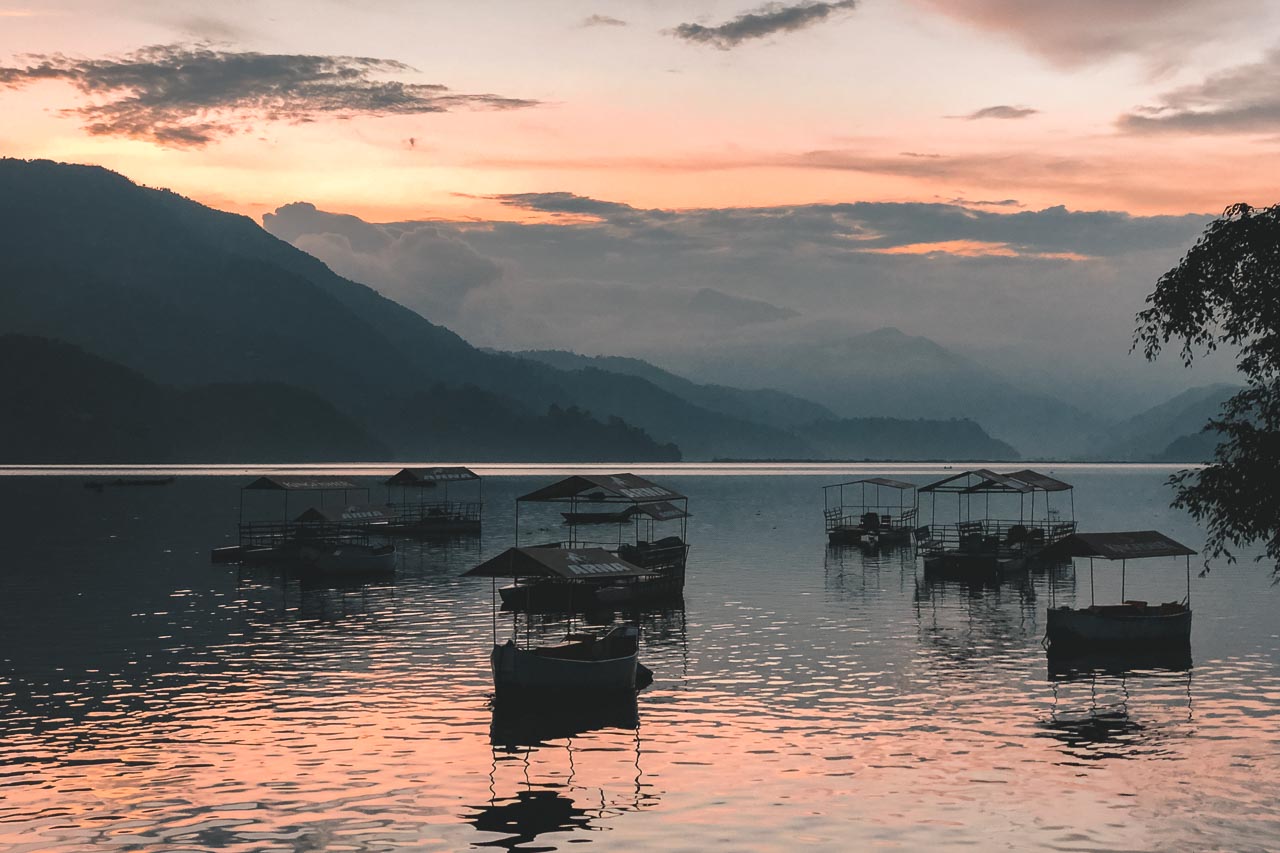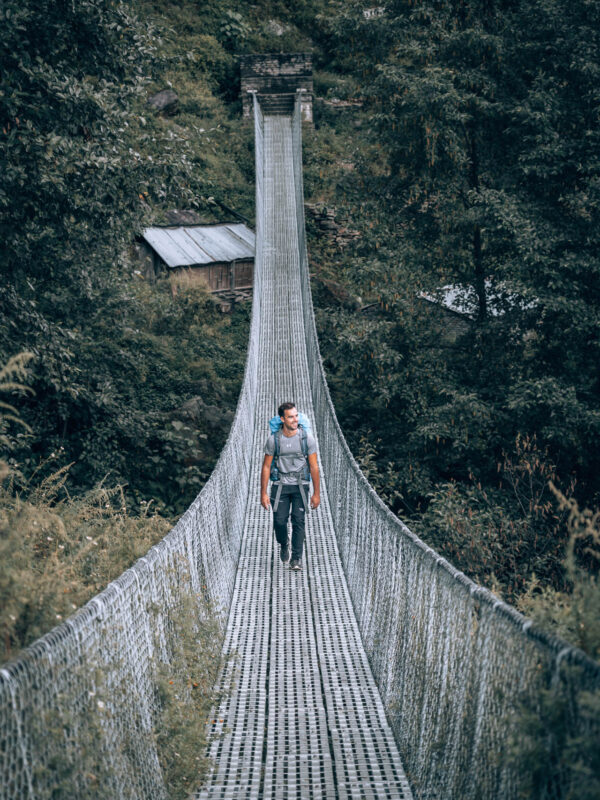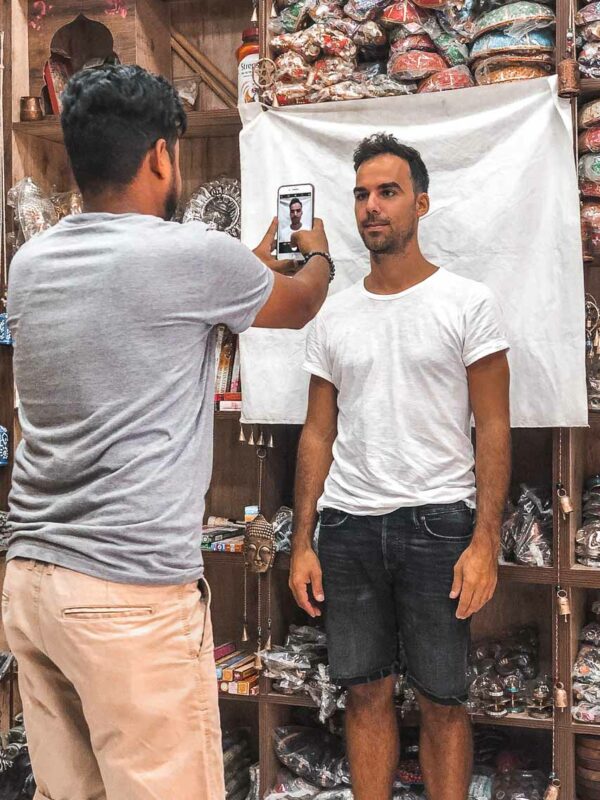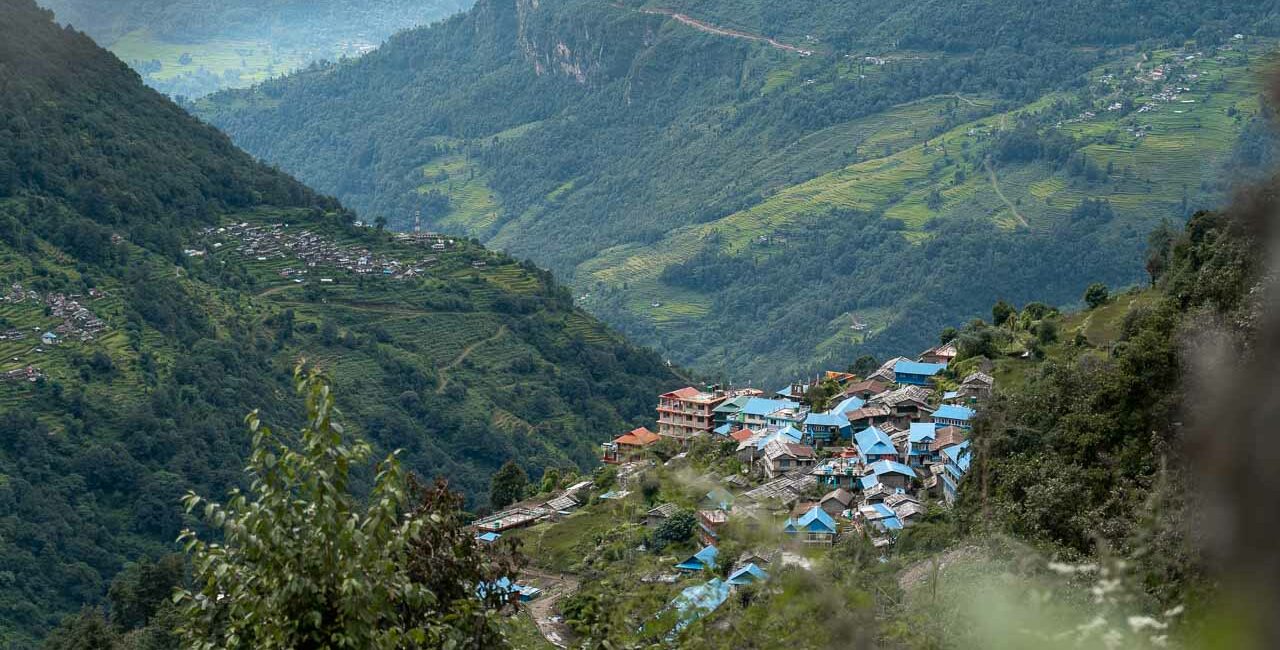Disclosure
Welcome and thank you for visiting this article. Before you start reading, you need to know that some of the links on my website are affiliate links from which I receive a small commission from the sale of certain items, but the price remains the same for you.
Follow me on Instagram for your daily dose of wanderlust inspiration!
Connect with me on Instagram!
Nepal is a country that is rich in ancient culture, beautiful landscapes, and some of the highest mountain peaks in the world. If you enjoy exploring the great outdoors and having exciting experiences, you should consider a trip to this stunning country.
But before you leave, it’s always helpful to know a few things, such as these 10 travel tips for Nepal, which will help you to get ready for your trip.
READ ALSO: Backpacking in Nepal: the perfect 3 weeks in Nepal itinerary

Flights and airports in Nepal
Perhaps the best tip, and also the first one you should consider when planning a trip to Nepal, is where to find the best airline tickets and which airports in Nepal to fly into.
Kathmandu International Airport is the most important and best place to land if you want to see places such as the Kathmandu valley, Bhaktapur, and the Mount Everest mountain region.
However, Pokhara International Airport has recently opened for international tourists, so if you would like to go hiking in the Annapurna Conservation Area, you might also consider flying to Pokhara instead of getting there by an 8-hour-long drive by tourist bus.
Skyscanner makes it easy to find the best flights and the different airlines that fly to Nepal. I was able to book a flight from Kuala Lumpur to Kathmandu for only €370 round trip.
READ ALSO: 9 best places to visit in Kathmandu
Visa for Nepal
A visa for Nepal is required for most visitors and can be obtained upon arrival (depending on your country of origin).
For Belgian citizens, obtaining a Nepal visa is easy at the airport via the kiosk machines, and below I listed the steps you need to undertake in order to get your visa.
- In order to get a visa for Nepal, you have to know how many days you want to spend in the country (Read my 3-week itinerary for more inspiration)
- Fill in the Arrival Card
- Fill in the ‘Tourist Visa’ form at the Kiosk machines or save time and fill in your ‘Tourist Visa’ form on the website of the Department of Immigration before traveling to Nepal.
- After filling in the Arrival Card and the Tourist Visa form at the kiosk machines, go to the office on the left side in the arrival hall.
- Get the receipt and go to the immigration office.
NEPAL VISA ON ARRIVAL COST:
15 Days – 30 USD
30 Days – 50 USD
90 Days – 125 USD
Read more information about extending your visa on the website of Immigration
Please note: visa requirements keep changing for every country. Please make sure you check all visa and passport requirements in your own country before booking your tickets.


Vaccinations for Nepal
Vaccinations that are mandatory:
- Yellow fever (only if you have been to a yellow fever country in the seven days before you enter Nepal or if you have been in transit for more than 12 hours in an airport in a country with yellow fever)
Vaccinations that are recommended:
- DTP (diphtheria, tetanus, and polio) and hepatitis A (regardless of the length of your trip)
- Typhoid fever (for a stay of longer than two weeks)
NOTE: As with all destinations, it is essential that you see a doctor or pharmacist at least 6 – 8 weeks before your visit to Nepal. Your itinerary, your medical history, and the activities you have planned all affect which vaccinations you need.

Travel insurance for Nepal
You should definitely get travel insurance for Nepal because you never know what could happen on a hike in the Himalayas.
If you book through a tour operator you will probably have basic insurance included. However, if something goes wrong and you need to be picked up by a helicopter in the mountains, these costs will not be covered.
There is also a high chance of getting sick because it is easy to eat something bad, get altitude sickness, or drink water that hasn’t been filtered.
You don’t want to go through all of this, but it’s even worse if you have to pay for everything yourself.

Best time to visit Nepal
When you plan a trip to Nepal, it is very helpful to know the best time to go. Since the weather is such a significant factor in your entire trip, especially if you want to do any hiking in the mountains, it is important to plan properly.
Therefore, the best times to visit Nepal are in October–November and March–April. During these times, you have the best chance of experiencing comfortable temperatures, clear skies, and little to no rain.
I went to Nepal from mid-September till mid-October and it rained almost every day. The amount of rainfall was so intense that we were unable to complete the Mardi Himal trek.
High season: October & November
October and November seem the best months to go to Nepal. During these months the sky is clear and blue and temperatures are pleasant. However, the weather is never predictable, and for sure not in the mountains of Nepal.
Shoulder season: March & April
March and April are the beginning of the hiking season in the spring, and you’ll start to see more people on the hiking trails. The weather gets warmer, and the sun starts to shine. a wonderful time to plan a trip through Nepal.
Keep in mind that tea houses and mountain camps are often full, so it’s best to plan your accommodations in the mountains (this is easy with a guide because they will help you with this)
Low season: June to September
This is the monsoon season that brings a lot of downpours and rain showers. The best advice is to avoid this period as I went from the beginning of September till mid of October and it was raining almost every day. Of course, the weather can not be predicted but it ruins your trekking motivation


Money in Nepal
Nepalese Rupiah (NPR or Rs) is the best currency to use in Nepal. 1 Euro is worth about 140 rupiahs. You can also use US Dollars to book a flight to Lukla or a guided trek at a local tourist office.
The most convenient way to withdraw cash in Nepal is at ATMs that can be found virtually anywhere. I never change money in a bank or other financial institution because they typically have the worst exchange rates.
Recently, I also got a WISE Card, which allows me to transfer money to a different currency via the app for a very low transfer fee and then get it from an ATM nearby. It saves so much money on transaction costs and exchange fees and it is super convenient.

Nepal budget
If you want to know how much a trip to Nepal will cost and make sure you can do some amazing adventures, it’s always helpful to have an idea of an estimated travel budget for Nepal.
For all of my trips in Asia, I use a daily budget of about €50, which should be more than enough for Nepal if you travel on a budget or mid-range.
Together with my partner, I spent €110 per day, which is a lot for this destination. However, activities like multi-day trekking, a jungle safari in Chitwan, and buying all of our trekking gear on the spot made our budget a bit higher than we had estimated.
READ ALSO: Nepal Budget: How much does a trip to Nepal cost?



SIM Card in Nepal
Getting a local sim card makes traveling through a country much more enjoyable and convenient. This way, you can not only get in touch with local agencies, but you can also search for information or read my blogs:)
I bought an NCell Sim Card with 16GB for 30 days for NPR 1500 / €10 in a local shop in Kathmandu because it was the best and cheapest option. You can buy it also when you arrive at the airport or in cities like Pokhara and Kathmandu.
TIP: If you want to buy a SIM card, you will need your passport.


The best apps to download for Nepal
- Booking.com is the best and our most favorite app to find hotels and hostels in Nepal
- Maps.me is the best offline mapping app on the planet. Download the map, choose your route, save your favorite places, and explore the country without using the internet. (money saver!)
- Currency XE calculates currencies on the go. With the app, you can access live exchange rates and calculate prices on your smartphone super easily.
- HappyCow is an amazing app to find the best vegan & vegetarian food around you. Very useful when you visit Nepal.
- Not really an app, but the ebooks of Lonely Planet need to be highlighted too. The ebooks are an easy, quick, and cheap way to carry almost every Lonely Planet guidebook in your pocket. From destination tips, and beautiful images to great road trip routes, you’ll find everything to get the most out of your trip.
- Hotels.com is the app we use often besides booking.com. If you book 10 nights on Hotels.com you’ll get one night for free, which is awesome
- HoneyGuide helps you to plan your trekking through the mountains, find teahouses along the way, and many more features.
- Peak Finder When hiking in the mountains, it’s nice to know which mountain you’re looking at in the distance. You can easily find out which mountain peak it is with Peak finder.
READ ALSO: 15 x best hotels in Nepal

TIMS card and trekking permits in Nepal
NOTE: From April 2023, it is not allowed anymore for foreigners to hike without a guide. TIMS and ACAP Permits will no longer be issued without a registered guide.
For any hike in Nepal, you’ll need to obtain a TIMS CARD (Trekkers Informations Management System) and a permit such as the ACAP (Annapurna Conservation Area Permit or a Sagarmatha National Park Entry Permit) if you want to hike in the Mount Everest Base Camp area.
You can get these permits from either the Tourism Information Center in Pokhara or Kathmandu.
Make sure you have your passport, insurance, cash (Nepalese Rupiah), the address of your hotel, and four passport photos. (You can still make the photos on the spot) to obtain your entrance permits and TIMS permits.
COST OF TREKKING PERMITS IN NEPAL:
- ACAP Permit: NPR 3000 / €21 per person
- TIMS Permit: NPR 2000 / €14 per person
READ ALSO: The breathtaking Ghorepani Poon Hill Trek in Nepal in 4 days

Food in Nepal
The food in Nepal isn’t very special, but it’s delicious and often vegetarian as most Buddhists don’t eat meat. Go to a local restaurant and try the amazing lentil soup or a dhal curry made in a traditional way.
Besides, it’s really yummy, very cheap and it’s also a great source of protein, which your body can use after some energetic hikes.
However, If you get tired of Nepalese food, you can easily find Western cuisine in larger cities like Pokhara and Kathmandu.
BOOK: Learn to make a delicious Nepalese recipe during an authentic cooking class


Transport in Nepal
- You can travel by bus: In Nepal, buses are the most popular mode of transportation. Although most visitors will use the tourist buses operating between Kathmandu and Pokhara and Chitwan, local buses serve all of Nepal. Local buses are cramped, uncomfortable, and you need to be lucky to find a seat while tourist buses have reserved seats.
- Shuttles or minivans: Many tourist offices offer shared shuttles & vans to the places you want to go to.
- Taxi: Taxis are easy and very affordable to visit places where no public transport goes such as temples or viewpoints near the cities.
- Rickshaws: A 2-wheeled cabin that is pulled by a local. Just sit down and relax in the authentic way of traveling through the narrow streets of Kathmandu
READ ALSO: Backpacking in Nepal: the perfect 3 weeks in Nepal itinerary


Laundry in Nepal
In Nepal, the cost of doing laundry is really low with prices ranging from NPR 100-150 / €0,7-1 per kg Depending on how fast you want your laundry to be done.
As a result of the many tourists that return to Kathmandu and Pokhara after their treks, there are a lot of local laundry shops in the towns and cities. Also, laundry facilities can be found in the majority of Nepal’s hotels and hostels.

With these helpful travel tips for Nepal, you will undoubtedly be well-prepared for your trip.
Please let me know in the comments below if you have any questions or suggestions regarding this beautiful location.

Read more articles about Nepal
Plan your trip with these travel tips for Nepal
To plan my adventures, I use these FREE websites and apps as they provide the best information, the best deals, and they are user-friendly.
- Trip – Flight deals
- Booking.com – Hotels and accommodation
- TourRadar – Group trips
- TripAdvisor – Reviews and activities
- HostelWorld – Hostels
- GetYourGuide – Activities and excursions
- RentalCars – Car rental
- Omio – Transport
- iVisa – Travel documents
- Wise – Money transfer
- VisitorCoverage – Travel Insurance
PICTURES AND EDITING
All the pictures on this page are made and owned by me. If you are interested in some pictures to use for your magazine, website, blog, or any other purpose, just send me an email and we’ll figure it out.
Do you like the edits? My Presets will be online soon so you can edit your pictures in just one click!
The camera gear I used for this trip
I never go out without my camera and many people ask me which gear I use. So to make it quite easy, I listed all the gear I used for this trip below.
Most of the time, I travel with the Sony A7III and the Sony 24-105mm/f4 as my primary lens but depending on the location, I change to another setup. However, I love the Tamron 17-28 to shoot in the big cities.














